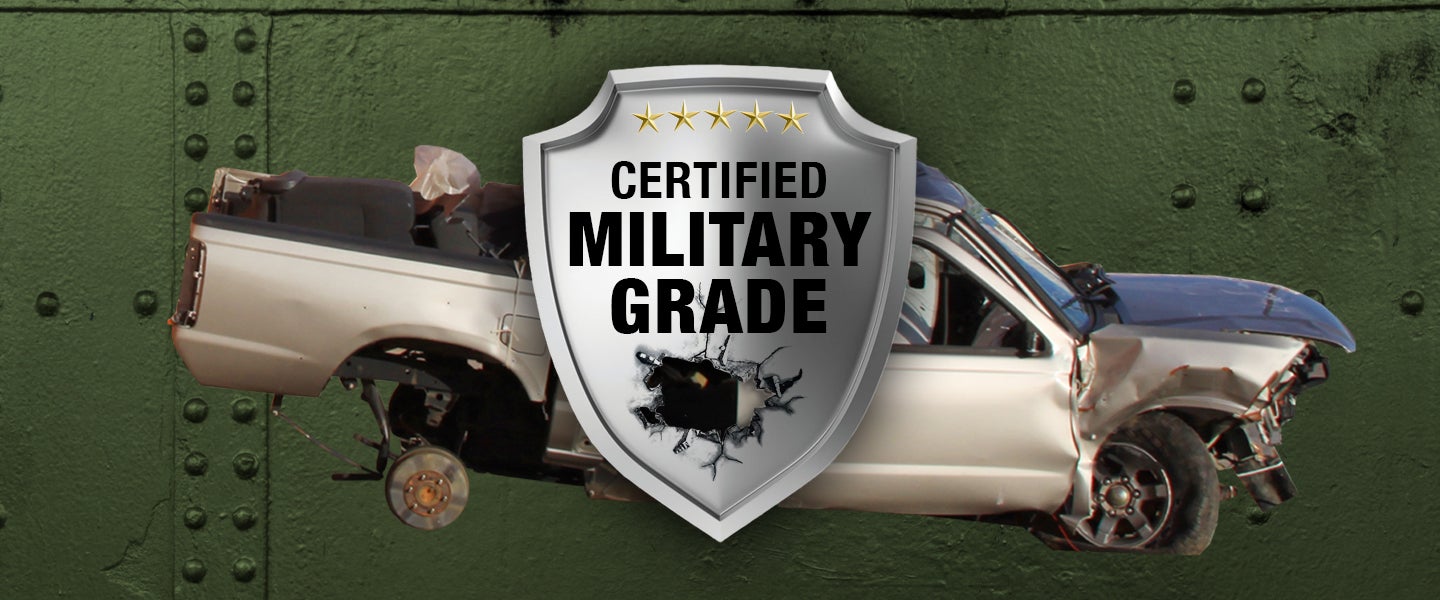Back in 2015, Ford Motor Company made clear to anyone with a TV that its new F-150 pickup was “military grade.” In fact, with Denis Leary declaring the vehicle to be “battle-tested” alongside not-so-subtle nods to tanks, Ford staked its entire marketing campaign on the idea that the F-150 met the apparently very high bar of the U.S. military.
Unfortunately, though, companies calling their products “military grade” is pretty much the same as Robert Pattinson calling his microwaved sugar pasta “authentic Italian cuisine” — total garbage.
“It’s mostly just a marketing ploy,” explains Alex Hollings, a former Marine and editor of the military news outlet Sandboxx News. “And to be totally honest, the military standard itself is a bit of a sham.”
• Read next: For actual commandos, going commando is a way of life
Technically speaking, the standard he’s referring to is called Military Standard-810 (or MIL-STD-810), “a loose set of requirements that companies would need to adhere to, to consider their product ‘military standard grade,’ or ‘military grade,’” Hollings continues. “But even then, they’re not really even requirements, they’re more like guidelines manufacturers can use to test their own products to see whether or not they would be military grade.”
The original intent behind MIL-STD-810 was to simplify the procurement process of gear for millions of soldiers. That way, if you’re in charge of, say, buying a million helmets for the Army, you could be confident that the companies competing for your business were at least meeting your basic, minimum requirements for resiliency.
Vets be like… from memes
This becomes a problem, though, when considering how broad and ever-evolving military technology can be. For example, it’s tough to establish a standard for items as disparate as F-16s and pocket knives. “So they had to make the guidelines pretty loose,” Hollings explains, “which means they’re subject to interpretation and can work for a lot of different situations.”
So while Ford says its F-150 has a “military-grade aluminum alloy body,” this could simply mean that it’s any old aluminum alloy that just so happens to be included in the long list of alloys the military uses for various applications.
And even then, Hollings says the military will often go with the more “cost-effective” option, considering they have to buy in bulk. “You’d assume that the Marine Corps gets top-of-the-line stuff, but the truth is, they’re going to get the stuff that doesn’t fall below the bare-minimum requirements of durability, while also costing the least,” he explains. “In other words, in the military itself, ‘military grade’ pretty much means the cheapest option.”
• Read next: Is Colonel Sanders stealing valor?
Commercially, Hollings adds, “there’s no governing body that says, ‘Okay, you met the requirements for MIL-STD-A-10.’ So effectively anyone can say their product is military standard.” This obviously isn’t great for civilian consumers, while ex-military like Hollings just scoff at the designation, particularly when involving firearms like the AR-15, “which tend to not be marketed as ‘military grade’ because a lot of the people buying them are guys like me, and we’re like, ‘We don’t want that shit.’”
Me explaining to civilians why military grade doesn’t really mean anything. from Military
Granted, Hollings says you can trust a product that’s actually used by the military to be pretty decent. “It’s nowhere near top-of-the-market,” he says, “but assuming it’s met the military standards, you can translate that to mean ‘cheap but reliable.’”
But, he concludes, “When you see ‘military grade’ on a product like a phone case, keychain flashlight or anything else that doesn’t get issued by the military, that’s just bullshit.”

